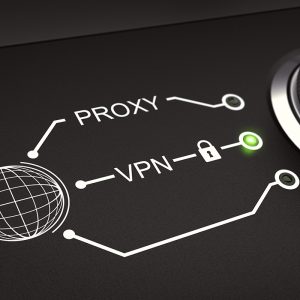Descripción del curso:
Learn to deploy high-availability email protection against the dynamic, rapidly changing threats affecting your organization as well as Gain leading-edge career skills focused on enterprise security.
This 4-day course helps you prepare to take the exam, Securing Email with Cisco Email Security Appliance (300-720 SESA), which leads to CCNP Security and the Certified Specialist – Email Content Security certifications. The Securing Email with Cisco Email Security Appliance (SESA) v3.1 course shows you how to deploy and use Cisco Email Security Appliance to establish protection for your email systems against phishing, business email compromise, and ransomware, and to help streamline email security policy management. This hands-on course provides you with the knowledge and skills to implement, troubleshoot, and administer Cisco Email Security Appliance, including key capabilities such as advanced malware protection, spam blocking, anti-virus protection, outbreak filtering, encryption, quarantines, and data loss prevention.
This course helps you prepare to take the exam, Securing Email with Cisco Email Security Appliance (300-720 SESA), which leads to CCNP Security and the Certified Specialist – Email Content Security certifications.
This course is a part of CCNP Security.
Objetivos del Curso
The 300-720 SESA exam certifies your knowledge of Cisco Email Security Appliance, including administration, spam control and anti-spam, message filters, data loss prevention, Lightweight Directory Access Protocol (LDAP), email authentication and encryption, and system quarantines and delivery methods.
After you pass 300-720 SESA:
- You earn the Cisco Certified Specialist – Email Content Security certification.
- You will have satisfied the concentration exam requirement for the new CCNP Security certification. To complete your CCNP Security certification, pass the Implementing and Operating Cisco Security Core Technologies (350-701 SCOR) exam or its equivalent.
Esquema del laboratorio
Labs are designed to assure learners a whole practical experience, through the following practical activities:
- Verify and Test Cisco ESA Configuration
- Leverage AMP Cloud Intelligence via Pre-Classification Enhancement
- Advanced Malware in Attachments (Macro Detection)
- Protect Against Malicious or Undesirable URLs Beneath Shortened URLs
- Protect Against Malicious or Undesirable URLs Inside Attachments
- Intelligently Handle Unscannable Messages
- Integrate Cisco ESA with AMP Console
- Prevent Threats with Anti-Virus Protection
- Applying Content and Outbreak Filters
- Enforce Business Policies
- Configure Outbound Data Loss Prevention
- Integrate Cisco ESA with LDAP and Enable the LDAP Accept Query
- Sender Policy Framework (SPF)
- Forged Email Detection
- Configure the Cisco SMA for Tracking and Reporting
Público objetivo
The primary audience for this course is as follows:
- Security engineers
- Security administrators
- Security architects
- Operations engineers
- Network engineers
- Network administrators
- Network or security technicians
- Network managers
- System designers
- Cisco integrators and partners
Requisitos previos
The knowledge and skills that the learner should have before attending this course are as follows:
- TCP/IP services, including Domain Name System (DNS), Secure Shell (SSH), FTP, Simple Network Management Protocol (SNMP), HTTP, and HTTPS
- Experience with IP routing
To fully benefit from this course, you should have one or more of the following basic technical competencies:
- Cisco certification (Cisco CCENT® certification or higher)
- Relevant industry certification, such as (ISC)2, CompTIA Security+, EC-Council, Global Information Assurance Certification (GIAC), and ISACA
- Cisco Networking Academy letter of completion (CCNA)
- Windows expertise: Microsoft [Microsoft Specialist, Microsoft Certified Solutions Associate (MCSA), Microsoft Certified Systems Engineer (MCSE)], CompTIA (A+, Network+, Server+)
Inclusiones
Con CCS Learning Academy, recibirás:
- Formación dirigida por un instructor certificado
- Manual del Estudiante del Seminario Oficial de Capacitación
- Colaboración con compañeros de clase (actualmente no disponible para cursos a su propio ritmo)
- Escenarios y actividades de aprendizaje del mundo real.
- Soporte para la programación de exámenes*
- Disfrute de asistencia para la colocación laboral durante los primeros 12 meses después de finalizar el curso.
- Este curso es elegible para el programa Learn and Earn de CCS Learning Academy: obtenga un reembolso de la matrícula de hasta 50% si se le coloca en un trabajo a través de CCS Global Tech. División de colocación*
- Precios gubernamentales y privados disponibles.*
*Para más detalles llame al: 858-208-4141 o correo electrónico: formación@ccslearningacademy.com; ventas@ccslearningacademy.com





